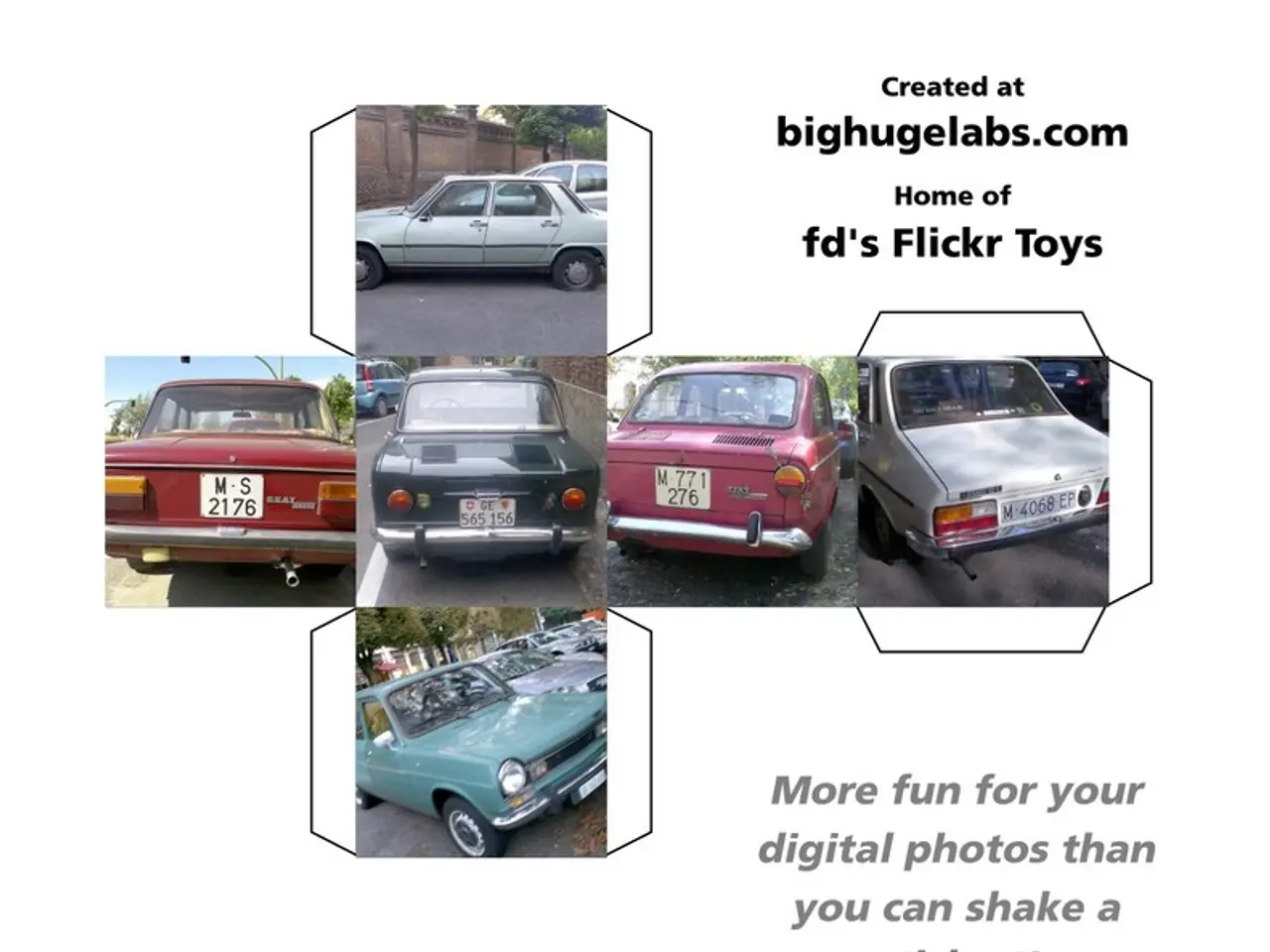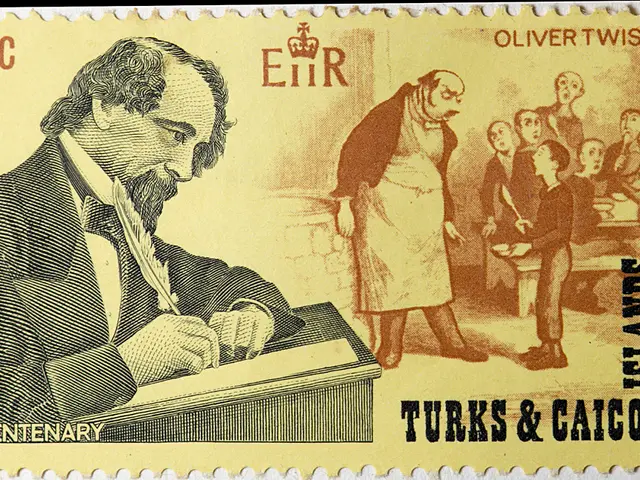Slower Electric Vehicle Adoption in India Compared to US, EU, and China According to NITI Aayog Report
Electrifying India's Transport: NITI Aayog's Roadmap to Boost EV Adoption
India is gearing up to transition from incentives to mandates for the adoption of zero-emission vehicles (ZEV), as outlined in the report "Electric Vehicles in India: Unlocking a USD 200 Billion Opportunity" by NITI Aayog. The report, released recently, proposes a comprehensive roadmap to boost EV adoption in the country, aiming to achieve a 30% EV market share in vehicle sales by 2030.
The report highlights several challenges that need to be addressed to accelerate the transition to electric vehicles (EVs) in India. One of the key challenges is the distinct Indian vehicular landscape, which is dominated by two-wheelers (75%) and small fleet owners, unlike Western markets that rely mostly on private cars. This necessitates a saturation-based EV adoption strategy focusing on affordable and short-distance mobility rather than nationwide uniform distribution.
Another challenge lies in the charging infrastructure. Although India has a reasonable ratio of chargers to EVs (1 charger for 14 EVs), charger utilization is low due to poor planning of charger locations, land access issues, and insufficient consumer awareness.
To overcome these challenges, the report recommends several policy actions. These include the formulation of a national EV transition policy with definitive targets, clear timelines, and a phased regulatory framework covering all vehicle categories beyond the current Corporate Average Fuel Efficiency (CAFE) regulations.
The report also suggests setting up state-level nodal agencies similar to Singapore’s EVe to streamline planning and deployment of charging infrastructure. Furthermore, it recommends mandating stricter EV adoption regulations for public fleets and aiming for 100% electrification of urban transport in at least 5 pilot cities.
To support commercial EV deployment, the report introduces innovative financing tools such as blended finance funds for affordable loans targeting small fleet operators. Additionally, an inter-ministerial task force has been proposed to resolve policy and regulatory bottlenecks swiftly and ensure coordinated implementation across ministries.
The report also focuses on the electrification of urban fleets of buses, para-transit, and freight vehicles in five cities to create a demonstrable impact. However, it does not specify the five cities where this will take place.
Moreover, the report proposes the establishment of a pooled fund with multilateral support to reduce capital cost barriers for electric buses and electric trucks. It is worth noting that India has made progress with electric two-wheelers and three-wheelers, but has been slow with electric cars and virtually no progress with long-haul electric trucks.
In conclusion, the report presents a comprehensive roadmap to boost EV adoption in India, targeting a 30% EV sales share by 2030. By addressing the unique challenges of the Indian market, implementing innovative policies, and streamlining the charging infrastructure, India aims to position itself as a global leader in electric mobility manufacturing and innovation.
[1] NITI Aayog. (2021). Electric Vehicles in India: Unlocking a USD 200 Billion Opportunity. Retrieved from https://niti.gov.in/sites/default/files/2021-07/Electric-Vehicles-in-India-Unlocking-a-USD-200-Billion-Opportunity.pdf
[2] The Economic Times. (2021, July 15). NITI Aayog unveils plan to boost electric vehicle adoption by 2030. Retrieved from https://economictimes.indiatimes.com/news/economy/policy/niti-aayog-unveils-plan-to-boost-electric-vehicle-adoption-by-2030/articleshow/84878120.cms
[3] Business Standard. (2021, July 15). NITI Aayog unveils plan to boost electric vehicle adoption by 2030. Retrieved from https://www.business-standard.com/article/current-affairs/niti-aayog-unveils-plan-to-boost-electric-vehicle-adoption-by-2030-121071501486_1.html
[4] Financial Express. (2021, July 15). NITI Aayog unveils plan to boost electric vehicle adoption by 2030. Retrieved from https://www.financialexpress.com/industry/autos-ocom/niti-aayog-unveils-plan-to-boost-electric-vehicle-adoption-by-2030/2289547/
[5] LiveMint. (2021, July 15). NITI Aayog unveils plan to boost electric vehicle adoption by 2030. Retrieved from https://www.livemint.com/industry/transport-logistics/niti-aayog-unveils-plan-to-boost-electric-vehicle-adoption-by-2030-11626580319764.html
- To address the unique challenges of India's automotive industry, the report proposes a comprehensive roadmap for boosting EV adoption, aiming for a 30% market share by 2030.
- The distinct Indian vehicular landscape, predominantly two-wheelers and small fleet owners, requires a saturation-based EV adoption strategy, focusing on affordable and short-distance mobility.
- The report underlines the importance of improving charging infrastructure, as low utilization is due to poor planning, land access issues, and insufficient consumer awareness.
- To overcome these challenges, the report suggests setting up state-level nodal agencies, mandating stricter EV regulations for public fleets, and establishing a pooled fund to reduce capital cost barriers for electric buses and trucks.
- The report focuses on the electrification of urban fleets in five cities, but does not specify which cities will be chosen for demonstrable impact.
- India has made progress with electric two-wheelers and three-wheelers, but has been slow with electric cars and virtually non-existent with long-haul electric trucks.
- The strategy aims to position India as a global leader in electric mobility manufacturing and innovation, and the report suggests the establishment of an inter-ministerial task force to ensure coordinated implementation across ministries.
- Personal-finance investors might find opportunities in the growing electric vehicle industry through innovative financing tools like blended finance funds, which offer affordable loans targeting small fleet operators.




